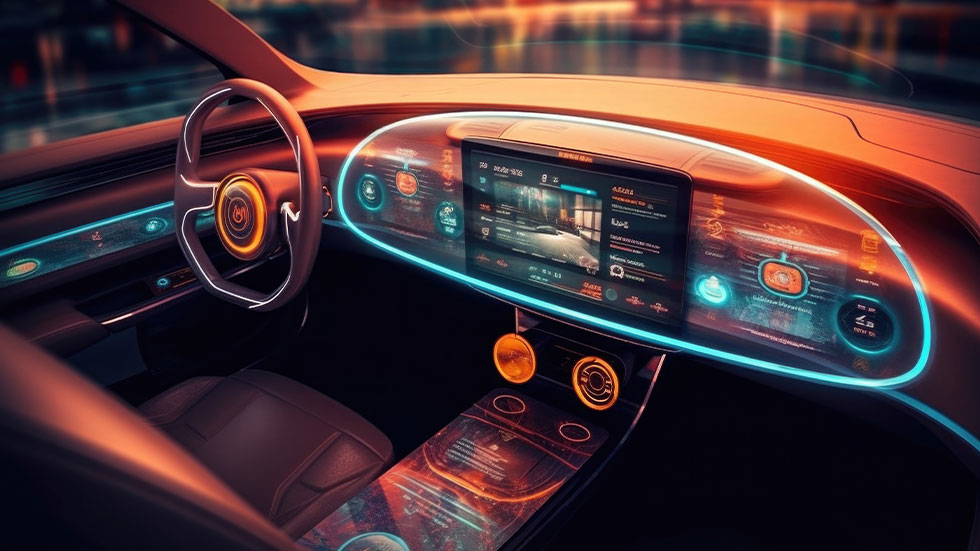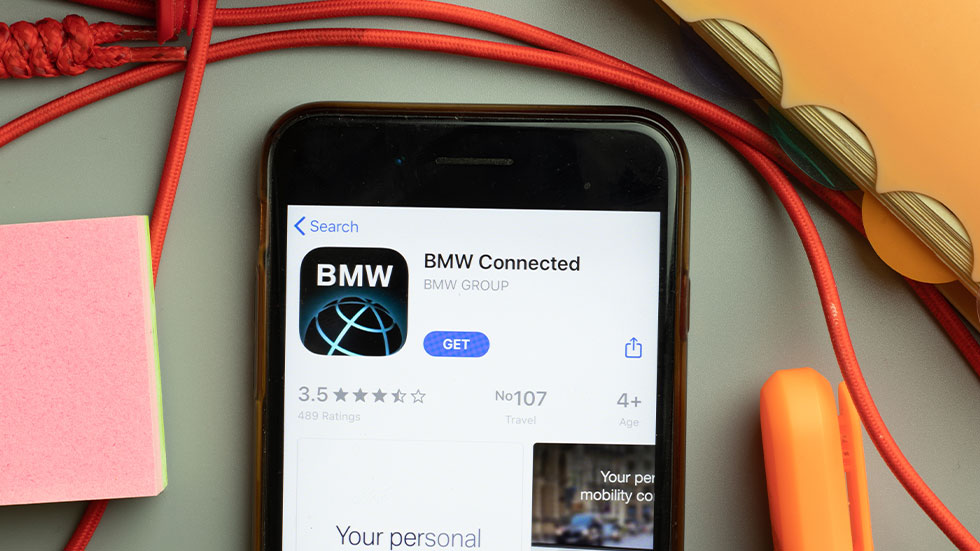Here's What to Expect from the Car of Tomorrow
Five automotive trends that will reshape our relationship with cars in the next five years

How we experience mobility in our cars is changing. Several exciting innovations in automotive software are set to radically transform the driving experience, from how we access and operate a vehicle to how it interacts with its users and the environment.
Over the next five years, we believe that these five trends will gain momentum:
THE SOFTWARE IN YOUR VEHICLE WILL BE AS IMPORTANT AS ITS LOGO
Tomorrow’s cars will be software-defined vehicles with their features and functions controlled by software.
SDVs will be known more for their user experience than their physical attributes. Software will create a direct connection between the car manufacturer and the customer, enabling platform-driven auto businesses which seamlessly deliver personalized services to customers via their vehicles.
“Crowd data” from millions of vehicles can be used to provide more intelligent mobility services across an entire automotive ecosystem. For example, Gaia-X 4 Future Mobility is a European initiative to enable close interconnectivity among car users, service providers, manufacturers and suppliers. Applications that will result from this broad data exchange include smart traffic infrastructure and vehicle lifecycle management.

YOUR CAR WILL RENEW ITSELF AND OFFER ON-DEMAND UPGRADES
Our phone’s software is regularly updated, with new features, apps, security updates and bug fixes.
We can expect SDVs that are connected to the web to evolve in the same direction, though they may have some way to go before they become as self-healing, self-renewing and as flexible as our phones.
Most of the world’s automakers are already experimenting with on-demand services that flow as software to users. BMW delivers downloadable upgrades via the My BMW App or the SIM card built into the vehicle. Volvo offers customers Over The Air software updates sent directly to its vehicles in two phases: a download phase while you are using the car and an installation phase when the car is not in use.
Some car companies are looking at monetizing software upgrades. Mercedes recently introduced an annual subscription service to unlock enhanced performance in some of its cars. BMW has experimented with a heated seat subscription service.
FOR GENERATION Z, OWNING A CAR MAY BE A THING OF THE PAST
How we live and work is changing. Hybrid working reduces the need for many employees to commute by car every day. Many younger people may want the convenience of a car but not the traditional ownership model, which is typically expensive, high-responsibility and inflexible. A different approach to getting on the road is paying for a vehicle only when you need one, perhaps through a subscription-based, car-sharing or peer-to-peer rental service. With their on-demand and remote-control features, SDVs lend themselves to this type of service.
Car leasing has existed for years as an option for avoiding personal ownership, but car subscriptions are different. Terms are generally shorter, more flexible and often include insurance and maintenance.
An innovative example of a mixed mobility subscription model is GetTransfer.com which offers customers a plethora of vehicle hire, rental and transfer services across cars, helicopters and planes.

YOUR CAR WILL ARRANGE AN APPOINTMENT WITH A MECHANIC BEFORE YOU KNOW YOU HAVE A PROBLEM
As part of the Internet of Things, the connectivity built into cars will be used to transmit real-time vehicle diagnostics, which will be used to plan increasingly sophisticated, and convenient, predictive maintenance schedules.
Feedback from advanced analytics powered by artificial intelligence will enable the car to flag imminent issues to the garage, dealership or direct to the manufacturer. The diagnostic information will be shared with mechanics ahead of time so they can order the necessary components. This technology will lift some of the responsibility off the driver to spot car maintenance issues while enhancing road safety.
YOUR FUTURE ELECTRIC VEHICLE MAY BE FUELED BY HYDROGEN
Global electric vehicle sales are surging. In China, the world’s largest automotive market, EVs already represent 21% of the market. According to consultancy AutoForecast Solutions, EVs could account for a third of the North American market and about 26% of vehicles produced worldwide by 2029.
That said, the rising cost of EV batteries, long waiting times for cars and parts, and issues with scaling recharging infrastructure in line with growing demand are already impacting adoption. In many cities around the world, today’s drivers have to wait for more than an hour to charge their vehicles at public charging points.
With their smart routing and energy optimization capabilities, SDVs can mitigate many of these issues; however, the hunt is on for viable fuel alternatives to power them.
As vehicles become more software-defined, we anticipate further development of alternative fuel sources across the automotive industry.
With the evolution of the software-defined vehicle, exciting changes are coming, from how cars are designed and built, to how we use and service them, and how we interact with the ever-expanding automotive ecosystem. At DXC and Luxoft, we see so many reasons to believe that there has never been such an exciting time for the auto industry.
